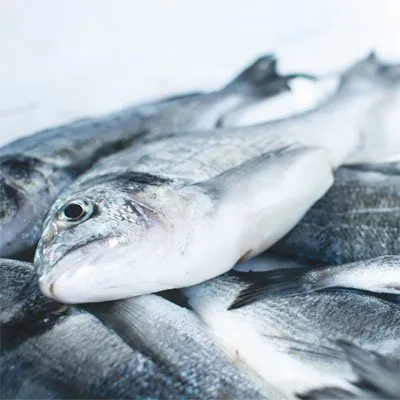Rising temperatures and changes in rainfall are leading to an increase in mold toxins in corn and cereal crops. Preventive measures as well as professional controls ensure animal welfare and consumer health.
The quality of animal feed is crucial for the health of farm animals. – It is also the basis for healthy and uncontaminated products for consumers. However, in addition to pesticide residues, mycotoxins – the toxic metabolites of molds – are also repeatedly detected in food and feed. The Food and Agriculture Organization of the United Nations (FAO) estimates that up to 25 percent of food worldwide is contaminated with mycotoxins. Around 1,000 million tons of food are lost each year as a result of the contamination.
But how do mycotoxins get into animal feed? What impact do they have on animal health? What role do proactive controls by manufacturers and modern analytical methods play?
Mycotoxins in feed and food
Mycotoxins are secondary metabolites formed by molds. They can form both on the harvested crop already in the field and during storage and thus contaminate food and feed. There are several pathways by which mycotoxins can enter food or feed. One of these pathways is the formation of mycotoxins on the still growing grain in the field, for example due to the presence of ergot. Another possibility is that mycotoxins develop in stored plant products. Additionally, mycotoxins can enter food through the food chain. This occurs when mycotoxins are transferred from feed to farm animals and eventually end up in final animal products such as milk, eggs, or meat.
Both mycotoxins (mold toxins) and plant toxins (toxins produced by plants themselves, also known as phytotoxins) are among the undesirable substances in food and feed. Prolonged periods of wet weather with a lot of precipitation combined with warm temperatures increase mycotoxin contamination in grain as well as in straw. In recent years, the problem of fungal contamination (mainly by Fusarium) has increased in terms of frequency and intensity. According to the European Food Safety Authority (EFSA), the fungal contamination caused by climate change promotes the spread of molds, especially in corn and cereals. The effects can lead to considerable economic damage in livestock farming.
In the context of feed and food monitoring, the following mycotoxin groups are particularly relevant:
- Aflatoxins
- Ochratoxin
- Fusarium toxins
- Zearalenone
- Fumonisin
- Deoxynivalenol
- Ergot alkaloids
- Patulin
A legal maximum value exists only for aflatoxin. For other mycotoxins, there are guideline values for the upper limit based on EU recommendations.
Mycotoxins – Impact on animal welfare
Mycotoxins in animal feed cause various health problems in animals. They can affect the metabolism, the immune system as well as the performance of the animals. Among other things, they can cause digestive disorders, liver damage, a compromised immune system, and reproductive problems. In particularly severe cases – for example, in dairy farming – mycotoxins lead to epidemic abortions as well as massive declines in milk production. The effects can be both acute and chronic and vary depending on the species and mycotoxin.
Mycotoxins pose a risk not only to animals – consumer health is also affected. There is a link between the consumption of mycotoxin-contaminated animal products and health problems in humans. In particular, mycotoxins such as aflatoxins, ochratoxin A and deoxynivalenol (DON) can cause cancer, liver disease and other health problems in humans. Therefore, the control of mycotoxins is of great importance not only for animal health but also for food safety.
Diagnostics of mycotoxins in animal feed
In addition to contamination in hay and straw, high mycotoxin concentrations often occur in silage. Green or blue discolored feed clumps are clear indications that close monitoring is required. If elevated contamination is suspected, it is imperative that a forage analysis be performed. Heavily contaminated parts should be disposed of.
The analysis and control of mycotoxins in feed are critical to ensure the health and productivity of livestock. Conventional mycotoxin detection can be performed by various laboratory analyses. Specialized laboratories such as Biolytix, for example, have many years of experience in feed analysis. By default, the ELISA method offers a good possibility to test the samples for mycotoxins. For extended analysis, chromatographic techniques are performed. Highly specialized analytical techniques such as liquid chromatography (HPLC) and mass spectrometry (MS) are particularly reliable and precise in identifying a wide range of mycotoxins in feed.
Preventing mycotoxins in feed
Regular checks can identify possible risks at an early stage and countermeasures can be taken. Preventive measures taken directly during cultivation also reduce the risk of mycotoxins. For example, crops should not be planted too densely. Corn should be avoided as a preceding crop before cereals, or the corn straw should be thoroughly chopped and incorporated. Moisture and temperature should be checked regularly during storage to prevent mold growth. Regular cleaning and disinfection of storage and processing equipment are other important steps to reduce contamination. Overall, good quality control of raw materials and careful selection and monitoring of suppliers are also essential to reduce the risk of mycotoxins in feed.
Since mycotoxin contamination can occur even with regular control as well as best raw material selection, some producers use so-called mycotoxin binders for particularly sensitive animal groups. These reduce the uptake of the contaminants into the animal metabolism by binding the toxins in the digestive tract.
Consistent controls along the entire supply chain
The control of mycotoxins in animal feed is an important part of animal health and welfare. Consistent diagnostics and preventive measures can minimize risks and improve the quality of animal feed. In the future, diagnostic methods are expected to evolve and become even more accurate. Innovative solutions to prevent mycotoxins, such as natural additives, could also be increasingly used to protect animal health.
Overall, the issue of mycotoxins in animal feed requires increased attention and conscious action by all stakeholders along the entire supply chain. Only through a combination of regular analyses, strict controls and preventive measures can the contamination of mycotoxins in feed be reduced and the health of livestock and the welfare of end consumers be safeguarded in the long term.




